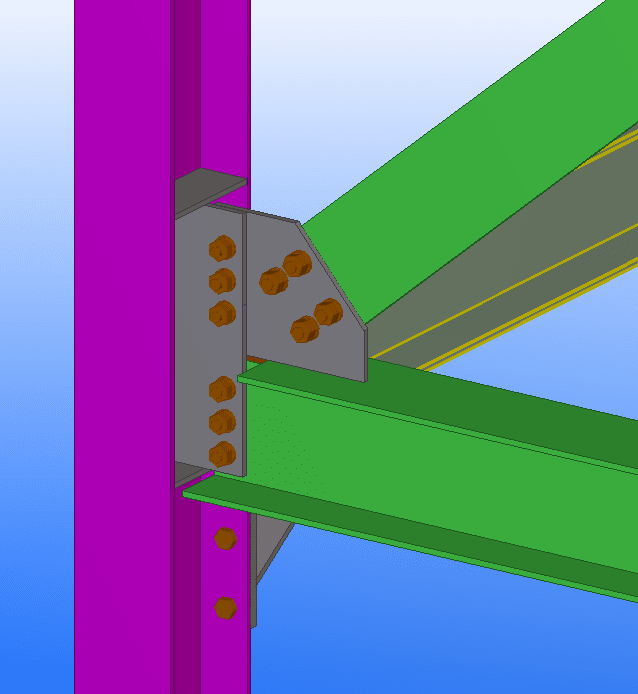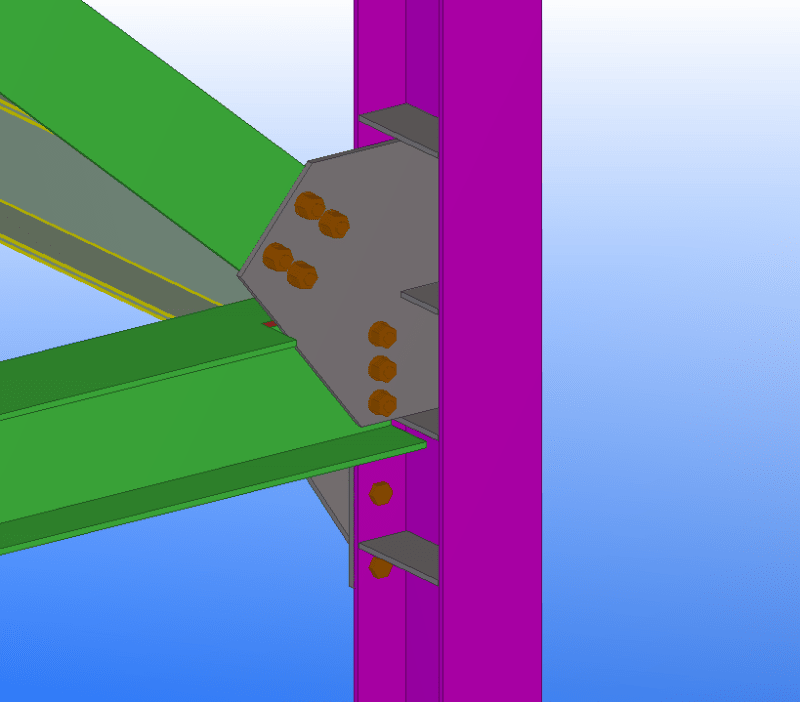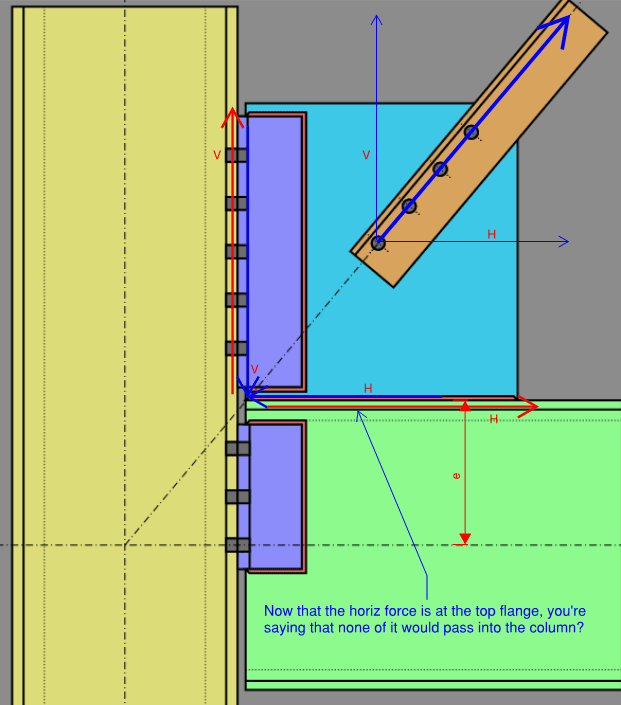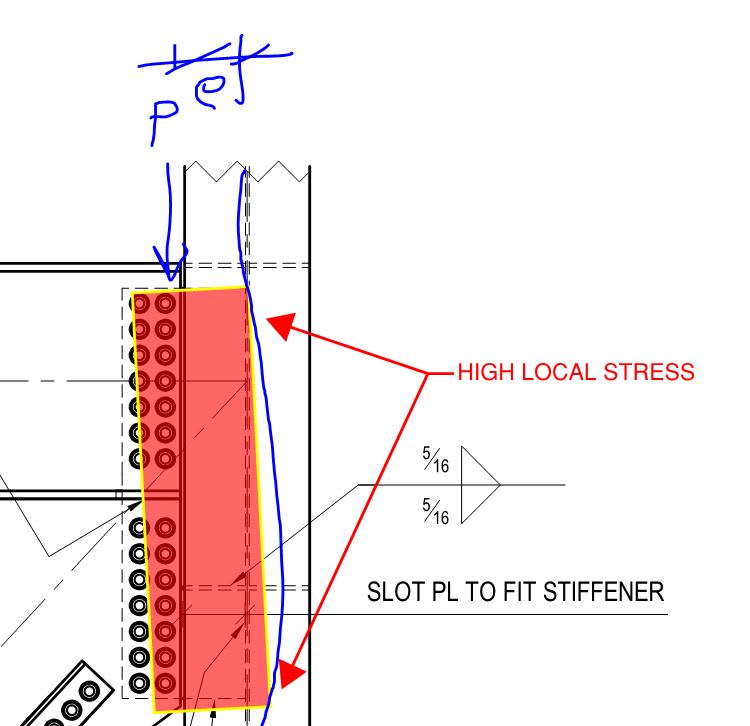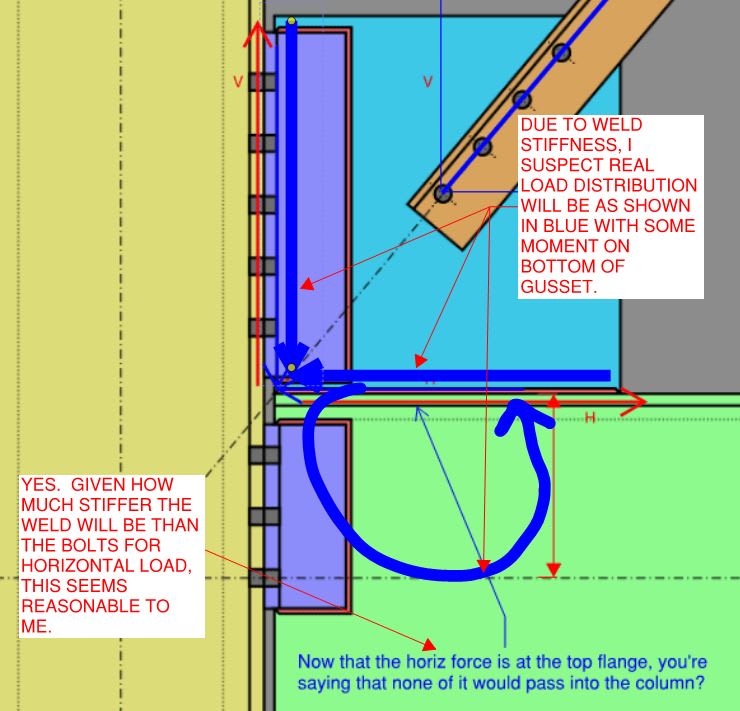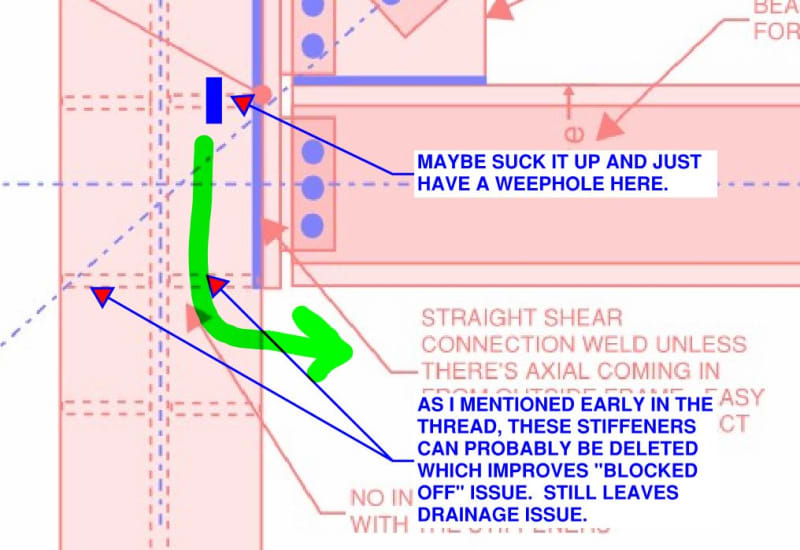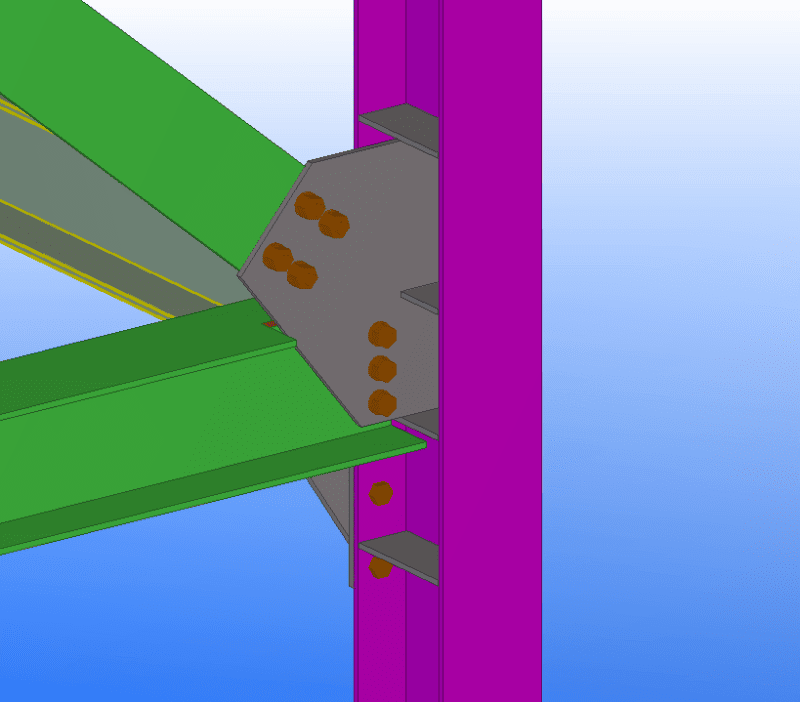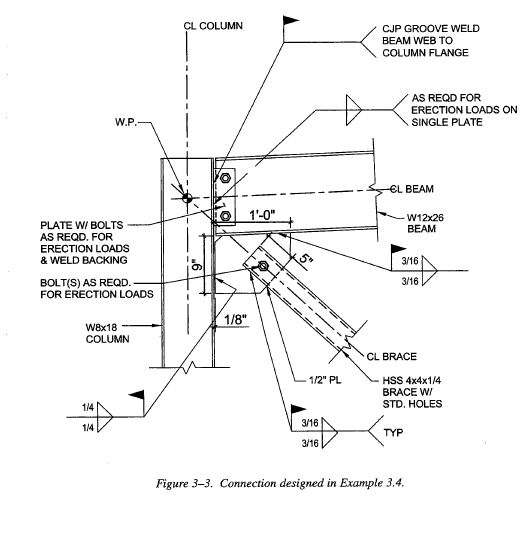@KootK:
I dipped offline for a bit. So I'll respond in general to support some ideas that were raised with the Q&A on my previous post.
COLUMN BLOCKING
I brought up this because it affects the "finishing" of the column: painting, galvanizing, fireproofing. In each of those three finishing scenarios, I just imagine that the blocking of that small portion of column by the flange plate would increase the complexity of the preparation of the column. You would have to paint the inside of the column before welding the flange plates, which means you would need to tape the weld locations off, move the column to the paint shop, paint it, move the column back to the main shop, attach the flange plates, then bring it back to the paint shop for painting of the flange plate section. Galvanizing would just inconvenience the dippers if that 1/2" hole that you were suggesting, got clogged. And it might be difficult to inspect that inner portion (although it would likely be protected given the mechanics of the galvanizing process). And I'm not sure how you would spray fireproofing in that little blocked off portion. It could potentially be contested as a weakness.
Again...I'm just trying to speculate on what this singular column may have to face. Obviously, there might be situations where the blocking would be okay. It's just food for thought.
FLANGE PLATE IDEA USING SEPARATE PLATES
The idea of having multiple smaller plates is a neat one. I do think it would work in terms of load transfer. You would need to get the fabricator on board, because having more small pieces can increase their workload.
WELDED COLUMN STUBS FOR PERPENDICULAR CONNECTIONS
Yeah. I thought about this suggestion. It's come up in a few recent threads. I like it now. Obviously making your columns into a christmas tree (with welded stubs) would need to be organized with the erector. Some like it (it can make lifting easier). Some don't like it (load imbalance in some cases). And you would need to make sure that the column + stubs can fit in a galvanizing tank or truck. But it's a great connection to reduce the bolt access requirements at the column web. Again...I'm trying to throw every scenario at this connection just to speculate.
Some great discussion in this thread. Brace-beam-column web connections are truly imperfect connections that you need to make concessions with the design in order to move forward. Truly a connection that will help bring the constructors and designers together to find a compromise.
